Ep. 135 From Army to Art School to Entrepreneurship
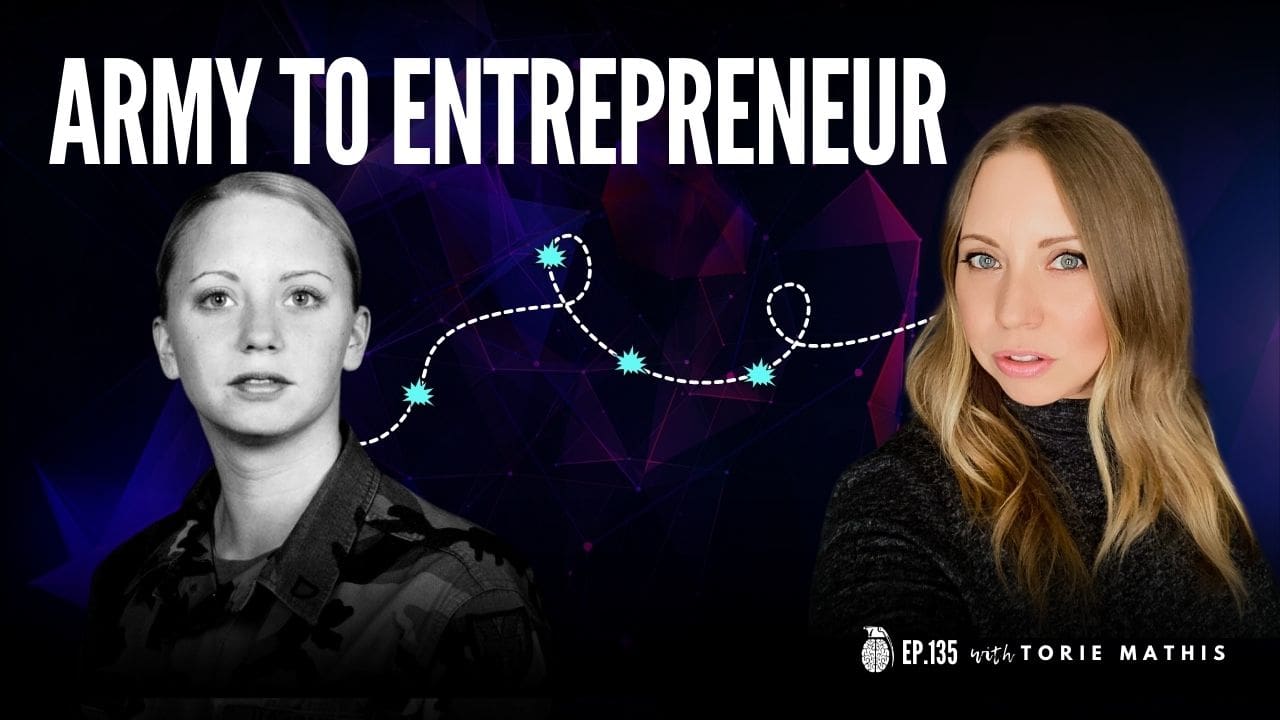
From Army to Art School To Entrepreneurial Success
Everyone’s entrepreneurial journey is a little different, but most seem to be a rollercoaster of changes, challenges, and opportunities. Mine is definitely all of those and more.
Coming up on 15 years of my entrepreneurial life, I reflect on the ups and downs, the unexpected turns, and the milestones that got me here. And I highlight the three major turns that made the most impact on my success and how you can speed up your chances of success too.
Listen or watch the full episode below:
EPISODE TRANSCRIPTION –
(transcription is auto-generated)
SAF 135
[00:00:00] Torie: And it’s crazy how life works out that way. Like when you don’t know the way that you want to take, sometimes life will just guide you. Shove you, push you violently, kick you in the direction that you need to go.
Hey, what’s up. It’s Torie Mathis, you know, this next coming year. It’s, it’s pretty exciting for me. I have been an entrepreneur now for it’s going to be 15 years and because I’m so used to it now, it’s really hard to look back at before I was an entrepreneur, because. So many things change. Once you take on a business yourself that it definitely makes you a completely different person.
And I can tell you that the person that I was then, and the person that I am now is night and day different though. In my journey, quite a few things have changed. Becoming a mom definitely is a big game changer for, you know, everything in your life. I don’t think that people before they have kids really realize how much that changes you and I was an entrepreneur before I was a mom and it definitely changed my business as well.
But really the hallmark of, I think everything that started my business would go several years before I started my business. In fact, eight years before I started my business. And that was, I decided because I was having such a hard time going to college. I had tried and I had tried to work and I had tried to go to school and it was just difficult for me.
To reach the goals that I wanted to, I wanted to go to college. I wanted to, you know, do great things and, and buy a house and travel. And you like all of these normal things, but as a young person doing these things on your own, like it, it really is not that easy. And so I made the decision. I had some friends that were older than I was, and I realized that they were in the same boat that I was in.
And so I felt that if they were, you know, three to five years older than I was, but we’re in the same boat as me that if I continue to stay in that exact same spot, I was going to stay in that exact same spot because nobody around me was moving on to more or doing anything different. It was just more of the same.
And that was like scared the crap out of me that I didn’t want my life to just be more of the same. And so I made the decision. To join the army. I knew a girl that I worked with actually worked at Macy’s at the time and, you know, just to retail, regular, you know, crappy job while I was trying to go to college.
And a girl that I worked with there was in the army reserves. And I knew a couple of people that had joined the military and pretty much everybody had a great experience with it. I think the biggest complaint that I heard was that they had to do lots of crap that wasn’t involved in their job, that they really liked their job, that some people just didn’t like all the extra stuff in it.
And I thought, okay, You know, not too bad. Every job has things that you have to do that you really don’t want to do. And I did some research. I looked at all the different branches and I decided because travel and money for college were my two, like number one, priorities, you know, the things that I had been working for as a civilian that I was just having such a hard time getting the army was going to give me what I needed.
To get those two things and you know, looking back on it and looking, knowing like so many people that are in the air force, the air force, might’ve been a better decision, but I’m, I’m glad that I chose the army. It meant that I got to go live in Europe. And unfortunately, while I was there, I ended up falling and I broke my hip.
And after September 11th we had like all these crazy guard drills. That we had to do that. We’re like these 24 hour shifts and with my hip, the way it was still healing, my body just could not handle wearing all that gear for that much time. And the units were really serious about their, their like operational readiness.
And so a lot of people that, that maybe had small injuries that could have stayed in and still been promoted and still been able to do a lot of things. They were kicked out. And so I was actually med boarded out. It was, it came very quickly. It was a really big ordeal. And the military actually said that which is really stupid.
Like if anybody ever gets these types of things from the military or from the government, definitely fight them. And definitely like go after what you want because the military. There’s nothing wrong with you. You were born this way and that is why your hip is broken. And they said they wouldn’t give me any money for med boarding me out.
I ended up having to go to DC to this whole big court case, a med board review thing. It, I had to go to DC from Germany. I was there for a week. I went in front of this whole big board with my lawyer. And I was in there for like two seconds. They’re like, yeah, they obviously didn’t even open up your file.
Obviously, this isn’t true. We’ll review all of this. We’ll get this all taken care of. And the army ended up giving me a percentage of disability, which was awesome because no matter what I was going to get out, but once I got that percentage of disability that opened me up to programs that the army offered, actually the veterans administration offered for rehabilitation.
And I ended up getting approved to a vocational rehabilitation program, which meant that I had to give them my GI bill. So I did not get to use that all the money that I went to put into that I had to give up all of that. But when I got approved, it allowed me into this vocational rehabilitation program, which meant that they would pay for it.
Fully be retrained and get me back into society with a job that they felt would, would fit me. You know, when I was in the military, I did admin stuff. So it was more like, I was like HR. I did HR and finance and things like that. Which did give me skills. I mean, I definitely had office skills, but I wouldn’t call that like career trajectory.
You know, skills. And so they asked me what I wanted to do. And I had been doing a lot of volunteering in Germany doing some teaching. I was teaching different women’s groups and different groups that were around on the basis on how to like make PowerPoint presentations and how to use the software to do what they wanted to do.
A lot of them were just wives and moms and that they didn’t really, at the time, like, I don’t think a lot of people even had computers or had them for very long. This was like like 2000. And so I was like, I want to teach adults software or adults, how to do certain things. I ended up going to this training for the Stephen Covey, seven habits of highly effective people.
And I talked to the person that gave that training and I felt like, what a cool job would that be to like go around and teach adults, like all these new skills that they could use. And I just, I thought that was like the greatest thing. So that’s what I told them. I told them I want to be an adult teacher possibly teaching software or teaching something so that I could still do some traveling.
And they’re like, okay, well we have to test you and see what your actual skills and what your personality actually thinks would be a good job for you. And I took like a week of test after test and it was like personality tests and all these different things. And it did not come back that I should be a teacher.
It came back that I should be a commercial designer. And so they said if I wanted to be a part of the program and I wanted to, you know, do this whole rehabilitation program that I would have to go to college for commercial. Now they did not want me to go for specific graphic design because they even looked at the different parts of the country and said that.
The graphic designers, that there was a lot more graphic designers and there were jobs. So they wanted me to be a little bit more specialized in that. And so I actually found an advertising program in, at a school in California, actually in San Francisco, which wasn’t very far from where I grew up and I was accepted into their advertising program.
And what was cool is I like it was an actual full-blown art school. So it wasn’t like I was going, you know, back to college to do all these classes that I already did in high school. And then like in the little bit of college that I did, but I went to art school. So like every single class that I took was related to art and related to my degree.
So for example, I had to take history classes, but they were all art history classes. And so everything was was usable. I didn’t feel like I like wasted my time though. I was always really great at math. Like I never had to take a math class because math had nothing to do with my degree. And so, you know, with all this stuff in college these days, you know, I consider that I went to a trade school really.
And I think that that is a fantastic choice for anybody that wants to go to college because to be able to know that you’re not wasting your time learning all of this general stuff like high school is general stuff. You don’t need all this general stuff. If you’re not going to be a generalist, like who wants to be a generalist, you need to go out there and do you know what you go out there and learn what you’re actually going to be using.
And so I felt that that was like that wasn’t the choice that I would have made, but I am so glad that that was like the way I was forced to go. And it’s crazy. Lifeworks out that way. Like when you don’t know the way that you want to take, sometimes life will just guide you. Shove you, push you violently kick you in the direction that you need to go.
And then looking back in the direction that was so much better than the choice that you would have made for yourself. You know, and so I ended up getting into the vocational rehabilitation program and started taking classes. I got a job with the army, so I got to actually stay on with the army for another couple of years, which was pretty awesome.
It was very interesting working for the army as someone in the army, as a soldier, and then working as a civilian. So it was really neat to be able to get that opportunity. And still, be able to do some traveling and things like that. That was pretty awesome. But after September 11th, the military was definitely very different, and living in Europe was very, very different.
Like in hindsight, I wish when I would’ve first got there, I would’ve done more traveling, but instead, like I hung out with people and got to know people and kind of got used to like the whole military lifestyle. And I didn’t actually do as much traveling as I wish I would have, because I thought I had more time.
But once September 11th happened Things got locked down a little bit more. We had less time to travel. Some places weren’t as safe to travel. I had a couple of incidences even in the town that we lived in that I actually felt a little unsafe and I was about ready to go home. Like, I didn’t really want to be there anymore, especially not being in the military and just being a civilian.
I didn’t feel as safe as I did when I first was there when I was in the military. So. It ended up being an okay time for me to come back to the states. And I came back and finished my degree and was all set and ready to, you know, find a job in that then that field. But when I got back, I still had a little bit of time left.
I worked for my dad for a short time as an office assistant. I’m like the office manager in his water our well drilling company. And you know, that wasn’t the greatest thing. Working with family is pretty hard. And again, that wasn’t what I wanted to do. I had already done the HR thing. I didn’t want to continue doing that.
So I found a job at ATT and it was actually because websites were getting to be more popular at that time. It was a job doing like this website data collection, I believe is what they called it. And I would actually like the salespeople that did the website ads would actually sell people on, or that did like the yellow pages.
I sell them on a website. And so then I would call, contact them and get all of their information and their pictures and like everything altogether and everything, all organized and like written out for the site. And then I would make a big package and then they would send that to the actual web designers that would put it together.
And I thought, well, this is like a really good job that at least I’m kind of doing advertising. I’m kind of right direction. And then they got rid of my position and stuck me into this like data entry position. And, you know, I had filled in for this data entry position before, and because I had done so much office management and HR, like, I was really good at it, but again, like, this is not what I want to do.
I don’t want to be data entry. I don’t want to just work at corporate doing you this cubicle job. And literally that’s what I did is I worked. In a cubicle at a computer, like just had these like little walls, you know, it definitely wasn’t what the plan was. And I ended up finding a job and I actually found it on Craigslist, like the weirdest thing.
Right. I found a job at a publisher. That published real estate magazines. And I thought, oh my gosh, like dream job. Like I would love to work for a magazine. I would love to have that be like my real introduction into the advertising world. And so I was able to land that job. And fortunately like the AT and T data entry job was like 10 minutes from my house. This publishing job hour from my house. So it meant that I was going to have to commute quite a bit, but at the time now I didn’t have kids. So it didn’t matter as much. The part that hurt was it I was making over $20 an hour doing the data entry and this was part-time and I believe it was $7 an hour, seven, 15 hours.
It was not very much some and so I had to make a decision. And so I told the AT and T people that, you know, I’m giving you my two weeks and they said, you know, we really need this position field. You already know it. We like you. And they offered me $25 an hour to stay. So I had $25 an hour of really what I do not want to do or $7 an hour. And I drive an hour and it’s part time and Sean and I had just bought a house and I decided, you know, we talked about it and I took the part-time. And it took me a little while working there, but I was able to work my way up. There was some turnover in staff and I, you know, hung on there. It was what I really, really wanted to do.
I think some of the other people that work there, like it wasn’t like their passion, what they really wanted and they left and I continued. Amazing. I learned so much more about running a business than I ever did. Just being like an office manager. I actually learned like how to really run a business and how to figure out costs and like how much money is coming in and how to take these really big projects and figure out how much you needed to do in order to make the money that you wanted to make.
And the skills that I learned at that job, like I still use those today. Everything that I do. And you know, the lady that I worked for, she probably doesn’t even know that, like she made such a big impact. And, and everything that I’ve done since then which is pretty amazing because that was a long time ago, you know, that was 2000 5, 6, 7.
So right around that time, I, I worked for that company and unfortunately though the magazine. All real estate and all of our clients were real estate agents. And when the real estate market was booming, man business was booming and I made more money than I had ever made in my entire life. And I hired people and I fired people and like, I was like legit.
Like it, it was amazing. And then the real estate market crashed and it wasn’t amazing anymore. It was pretty hard. And the lady that was running the company. No, she’s a smart cookie. And I think she saw it coming. And she sold the company to the owners of one of our clients so that they had the rights to the magazine.
They were our biggest client and she started to step away. And so she was able to actually cash out of that business before everything collapsed. And fortunately, As she was stepping away that she kind of pushed me into the front and I was actually running the whole entire thing with her, just kind of on call because like I said, she was definitely making her way out of the business and, you know, eventually we had some clients that.
That we’re supposed to be printing and we’re supposed to be paying us and we’re, they ended up not paying. And then we had everybody canceled at once and all of our printing prices were based on how many people were printing or how many magazines we were printing. We were doing over 400,000 copies every single month for about 45 different clients.
And it went from 45 to 10 to eight to three, like, and it was just so fast and there was no way for me to restructure it or to fix it. It was just like a violent crash. And so I was the one that had to call the new owner of the company and let him know what was happening. And he said, okay, we’ll close. So we still had a couple of clients though.
And so he made arrangements with another company that, and I actually knew of them that they did some real estate postcards and things like that for companies. And he said, well, let them, you know, take these last couple of clients and then you can work out what you want to do with them. And so this company, and they’re the greatest people they took on those.
Those couple of clients and then kept me on as a freelancer. And so I didn’t have a job anymore. So I took them as like my first clients and I continued to design those magazines. And then I, I hustled, I was, I had already like once the, the magazine once the owner stepped away. We kind of started to downsize just a little bit.
And I actually worked from home and one of my employees worked from home in order to kind of get the costs down for the business, because there was no reason for us to have like, like we were such a well-oiled machine that we, you know, rather than hiring multiple part-time designers, I hired a full-time designer and we were able to do everything that we needed to do.
And we did it. So, well, like we were so like, we developed like these processes and these systems that we were able to take stuff in and we knew exactly what we were supposed to do. And we pumped out so many magazines every single month. Like it was pretty amazing. And so I had already been working from home for a little while, and I’d already had a kind of a taste of, of doing things myself.
I wasn’t going to go back and, you know, try to do AT and T again, or be an office manager somewhere. Like this was what I was doing. I learned so much that I was going to make this happen. And so I hustled, I tried to get as many clients as I could. I would work for cheap logos, business cards, whatever people needed.
And I really just took on anything that, that I could, and it took a long time. I guys so bad at it. I think the hardest part was like, even though I learned how to do a lot of marketing and a lot of, of design and a lot of processes and a lot of systems, like these are the things that I really learned working at the publishing house.
What I didn’t learn was how to get clients. And I think that that was the hardest part. And so when I went on my own I didn’t really know what to do. I structured my business. And I got all the business cards and I put together like a really crappy website that I didn’t know how to do, but I kind of put something up and.
I just had these few clients and because I was a veteran and because I was a woman, I thought, okay, well I can get women owned, veteran woman owned business. And this veteran owned business certification. And I certainly think I got a disabled veteran certification because I am a disabled vet and I thought, okay, that’ll be how I’ll get clients.
And you know, that it took a lot of time to get that. And maybe that works for other industries, but really the clients that I ended up getting for that ended up being just crappy. Like they didn’t work with me because they wanted to work with me. They worked with me because I would get them if they spent a certain amount of their budget with a disabled veteran business, then they could get like extra points on getting these government contracts.
And so I was just like a means to an end and. It was just the clients that I had they just, they were not the greatest. And I did not have the life skills, the business owners skills, the customer service skills, the invoicing skills, the pay me now skills. That it, that it really didn’t work for me. So I actually liked working with small business owners.
I liked people that were like my dad, that like they had a great product and they did like a really great job at what they did. They just weren’t marketers. And they’d probably been ripped off by people doing a crappy job for them. Or leaving them locked out of the things that they, that they did. I found that that was like a reoccurring theme in the first, probably 10 years of my business.
Fixing what other people had broke. People getting a website designed by like some kid that they live down the street and then moved. And apparently they own Photoshop. So, you know, they were a graphic designer, but they decided graphic design wasn’t for them anymore. And then they didn’t give the people the passwords.
And so they had a website that they couldn’t edit, they couldn’t do anything. It was all locked up. And so I would fix that I would go in and figure it out and redesign things and, and, you know, get things unlocked and fix everything back up. And what I discovered is that I needed to make sure that I had money all year, not just at the time that I landed a client kind of like, like real estate agents.
Right. They close a house and so they have a lot of money and then there’s no more money coming in until they close the next house. Well, for website. It’s kind of similar because you know, it can be thousands and thousands of dollars, you know, depending on what size the website and you know, this was, you know, back however many years ago.
That that was a lot of money coming in at once. Well, not only was that a little bit hard for me, because I want, I need money all year. It was hard for them also because a lot of them didn’t have the money to spend, you know, that much money at one time on a website. So I figured if I can get them to, and I don’t know where I came up with this, but it was pretty smart.
If I can say I’ll finance, you pretty much. And rather than, you know, feeling like you have to do the entire website right now, I’ll work with you throughout the whole entire year. And we’ll continually work on this website. We’ll get a good enough to get up and then we’ll continue to work on it. And through that entire time, I’ll make any updates that you want to, because we’re going to continue to work on this website for you.
And then I would take however much I would charge them for the website. I would add just a little bit for the financing and then for the updates. And I would work with them for the year. And so then their pay, their website was split up over a year. I even did somebody for. Too. I think I did two websites and I think I did it over two or three years.
So that way I was able to build these people up. I didn’t have the pressure of, you know, having these large sums of money coming in at one time. And then I was able to make it a little bit easier for all the clients, because they were able to pay for it. And they were able to take off a lot of this pressure of feeling like they had to have everything right this second. Which was good and bad because then you have people that never get stuff to you. And I still have websites to this day that we started and I would email them all the time and I would contact them. Like, let’s get some more, I need this still. And they would just never get it to me. And that’s kind of unfortunate.
So sometimes I think though it’s seems like it’s a good idea. Maybe lighting that fire under somebody’s butt is a little bit better. So, you know, live and learn on those things. I try to do things a little bit differently now with clients that I’ve had and you know, really now I would rather focus on teaching people how to do some of these things themselves, because I think a lot of the smaller solo preneurs or coaches, service professionals, mom and pop businesses, like they still don’t want to hire somebody to do this for them. A lot of this stuff, like they really just want to be able to do it themselves.
And so I want to be the one to guide them and to help them figure out this stuff. And then when they do need a little bit more help or they do need to be walked through some. I think you need to do some of these things are a little bit complex. I want to be there for them to be able to walk them through it, or maybe even do it for them, or maybe point them into the direction of somebody that was more like me 10 years ago, they could do things that they have skills.
They just don’t have the, the skill sets to run a full business or to have something really big. But they still have the skills to get the job done. So it’s definitely been quite the journey the last 15 years. And what’s crazy is it like I said, it took a long time for me to actually make. Good money.
And I didn’t really like those business skills. Like I said, I just didn’t have them. I learned how to do advertising, which meant I knew how to do billboards. I can do a marketing campaign for a magazine. Like I could do all of these type things. But I didn’t know the businessy part of it. Honestly, I learned the business businessy part of it from Re Forleo.
I took one of her courses. It was amazing. And it talked about how to run your business, but how to run your business online. Opened up my eyes to the world of digital marketing and how to actually do all these things online so that you didn’t have to actually like go out and get clients like you could do all of this online.
You could do all of this and serve so many more people. And it was a pivotal moment for my business, I think before I took her course. And before I figured out this digital marketing part of it. I don’t think I made $30,000 a year from my business. And within a year of taking the course, I made a hundred thousand, I did six figures in business and ever since then, I have done six figures easily, like, and multiple six figures of business since then, because it was such a shift.
It was like all of a sudden, all these things that like we’re mystical. I don’t know, like it all made sense then, and it meant that I could reach so much more people. So I took the whole concept of, you know, getting people on this, recurring, getting people where I can design what they want to, and then being able to magnify that by reaching more people, you know, still fine tuning that.
And I think that that’s part of the, the best part of running a business. As you can always keep doing things a little bit better and. Learning those skills or figuring out those things that your clients really want. You know, I started doing magazines and I did brochures and logos, and then people wanted websites and I didn’t really know how to do websites.
I learned a little bit in college. And I ended up taking courses with lynda.com at the time. I think that LinkedIn since then has bought them. And I took every single course that had to do with website design and they had like design files and they’d walk you through it all and you could actually do everything.
And that’s how I built a lot of websites, hundreds and hundreds and hundreds of websites over the years. And now I would say pretty damn good website designer. Yeah. And then learning funnels and email marketing campaigns and Facebook ads. And so, you know, really just diving into the entire, you know, digital marketing atmosphere and how that can really, really help these small businesses.
And that’s, that’s all I want to do now. And what’s amazing is Sean you know, he worked corporate, he worked for Pepsi and eventually he was able to quit his job. And he came and worked with me. And then rather than me kind of being a freelancer, it was like we had an agency and he helped do the customer management and he helped bring in clients.
And then some of the things that I wasn’t able to well, some of the things that were really easy for me, so that I could go and work with clients and, and do the real design stuff. I was able to hand off some of the things that I was doing and allow him to do those things so that I could grow the business even more.
And that was like it, like there are these like pivotal moments, like figuring out the reoccurring income was huge. Figuring out how to get a monthly income, even though I didn’t have a monthly income business, huge game changer. Figuring out digital marketing and make and making a hundred thousand dollars.
Game-changer Sean being able to quit his job. I mean, it was amazing. Like he hated that thing. Like he was not, he worked so hard and had such good ideas and just wanted to do so well and was never rewarded. Because it’s corporate, you’re a number you’re not, you know, ever going to get what you want or what you deserve.
Like you would, if you were running your own business. And then several years ago, 2017, Sean had an opportunity to have a building that he could use to open a automotive museum. And I thought about when, when I took that job as a part-time publishing assistant, like it financially, it was not the right thing to do, but like we could squeeze it out and make it work.
Like it wasn’t going to be easy. And the museum was the exact same thing. Like this is an opportunity of a lifetime. This is what you really want to do. Like go and figure it out. Like I went and I figured it out and it was rough, but I did it. And I had these like pivotal, like times. Right. And now it’s like so amazing to see Sean have his pivotal times, you know, he started Miles Through Time.
He had multiple. Things that he was doing, he was doing, you know, the museum for admission. He was doing storage and he was doing consignment and he didn’t know what was going to work. And then he got to that next point where he switched locations, dropped all of that extra stuff. And he said like, I am going to be a museum.
He was able to meet a fantastic man, a fantastic family, really that saw the vision that he had that has become his, you know, pretty much partner in this. The understands where he wants to take it. That understands that it’s more than just him. It’s not, you know, his big collection of cars, but this amazing place that tells people stories.
And it’s really keeping these people’s legacies alive. It’s an amazing opportunity for him. So, you know, he has those different little milestones as well. And now, you know, we had the opportunity to take over the space that was actually being sublet to us. And we, in order to do that, like in order to be able to lease that whole entire place, we kind of had to take on this, this antique market to.
But we’re going to make that work for us and we’re going to figure it out. Like, do we know how to run an antique market? No, just like, we didn’t know how to run a museum or start a museum or build websites or, you know, any of this other stuff, but we figured it out and you know, so every single thing that we’ve learned during this journey, we just keep like adding it on and stacking it on.
And like, we really understand that because we can mark it because we understand digital market. We can do this, you know, it’s the same concepts that we, you know, made work at these other places and we can make it work at this one too. So it’s, it’s pretty exciting to see how much has changed in the last 15 years.
And I would say that because it took like, So long to get to that point, I would say it took, I think it was like until 2012, that like really that snowball happened. So, you know, five years of working and seeing very little progress until it like hit that, you know, bell curve and big things begin to happen.
And so it’s really exciting, like how much faster and how much more and how much bigger things happen that I’m so excited to see. You know, what’s going to happen, you know, next year and the year after, you know, we made it through all of this COVID stuff and, you know, if we can make it through that as small businesses and, and luckily we were able to like help some other small businesses through that as well.
I think that that like, like we got something going, I think it will do pretty well. And I hope that we can help a lot more small business owners through things like this. And with these new brick and mortar business, it’s kind of cool. We were able to hire people and now we’re, you know, helping them support their families and hopefully have a better life because of it.
Got to donate, you know, tens of thousands of dollars to some charities. We did the Tesla world record event where we were able to raise a lot of money for O U R and it’s, it’s been exciting that not only are we, you know, doing these things for ourselves, but we’re really able to make an impact on small businesses, we’re able to make an impact on families in some, some charities and organizations that we feel really strongly about.
It’s pretty exciting. So I hope that if you want to be an entrepreneur or maybe you’re in like those first years, like I am just know that like things change. And every year, every month, every week you learn these new skills that you just start stacking on the other skills. And again to have this groove of things that have things that are going forward and you hit this bell curve, and I know that you will too.
You just have to be able to stick it out and keep going through it. And I really think that figuring out digital marketing is a pivotal point for every small business. And once you figure that out and how it works for your business, that it’s, it’s where the big big things happen.
Resources for your business
🚀Join the SMART Arsenal - The SMART way to Marketing + Grow your Business
🤩FREE Resources: https://bit.ly/3esCoBN
😎Tools We Use + Recommend: https://bit.ly/3xTW218
✅Our favorite Freebies
2 FREE Audible Books➜ https://amzn.to/31ZPDqb
Up to $100 off at Fiverr➜https://bit.ly/100offFiverr
Kartra - 30 days free + free training➜ https://bit.ly/3bcmXvf
Kajabi - 14 days free➜ https://bit.ly/3w3gISL
Creative Market Freebies➜ https://bit.ly/3bdlDIJ
Canva Free Version➜ https://bit.ly/3uw0np1
Free Adobe Stock Photos➜ https://bit.ly/freeAdobestock
About Digital Marketing Expert Torie Mathis
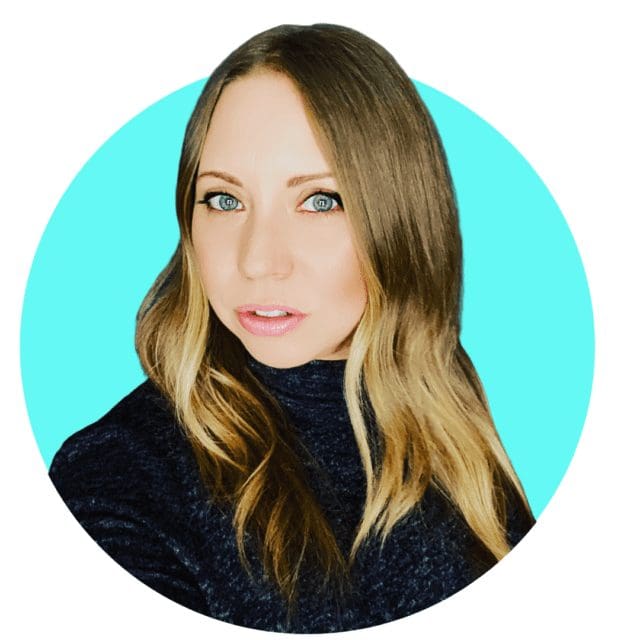
Torie hosts SMART AF, a show for non-techy entrepreneurs looking to grow their business, with her husband Sean and is the creator of SMART AF Magazine. Learn from Torie at the Smart Arsenal and on her channel.
What do you think? Let's talk! Leave a comment.
Hi! I'm Torie!

You don’t need crazy tech skills, buckets of cash, or dedicated staff to market your business. You don’t even need a lot of time.
What you need is to be SMART.
GET SMART AF
DELIVERED TO YOUR INBOX
from your Digital Marketing Coach Torie Mathis!
Let's get SMART!
Let's Connect!
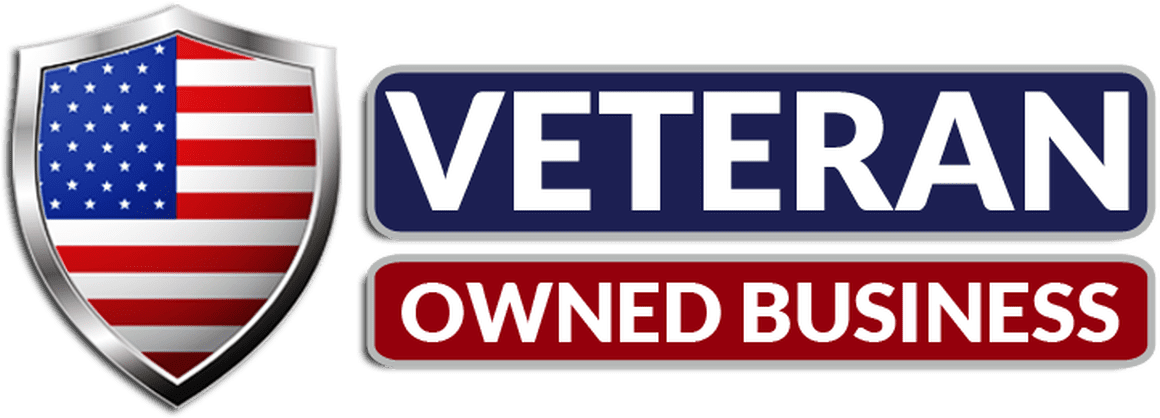

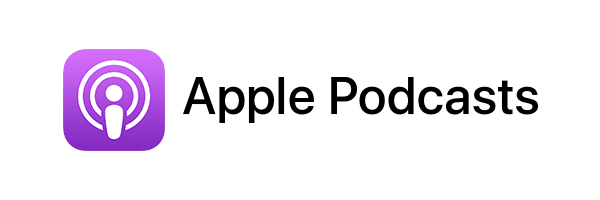
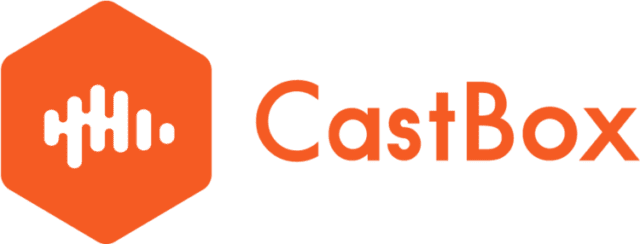

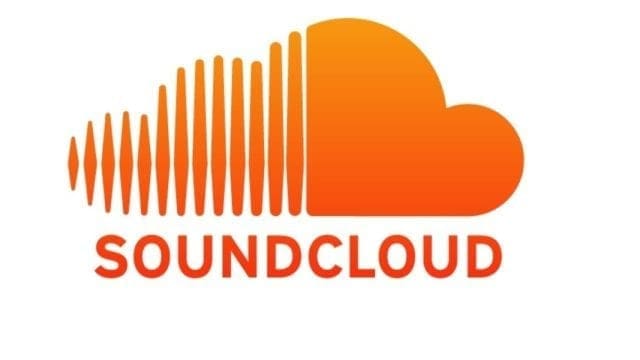
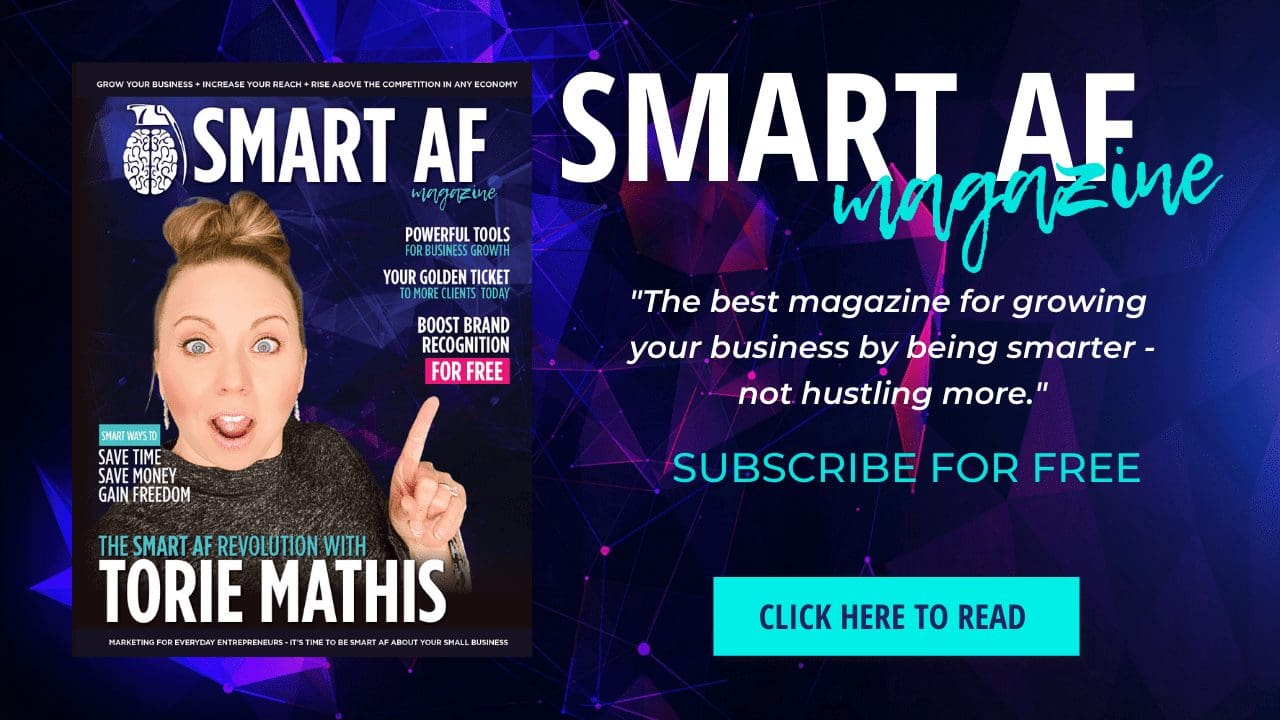

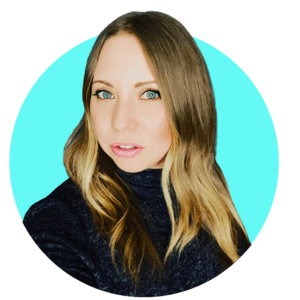 I help entrepreneurs learn digital marketing.
I help entrepreneurs learn digital marketing.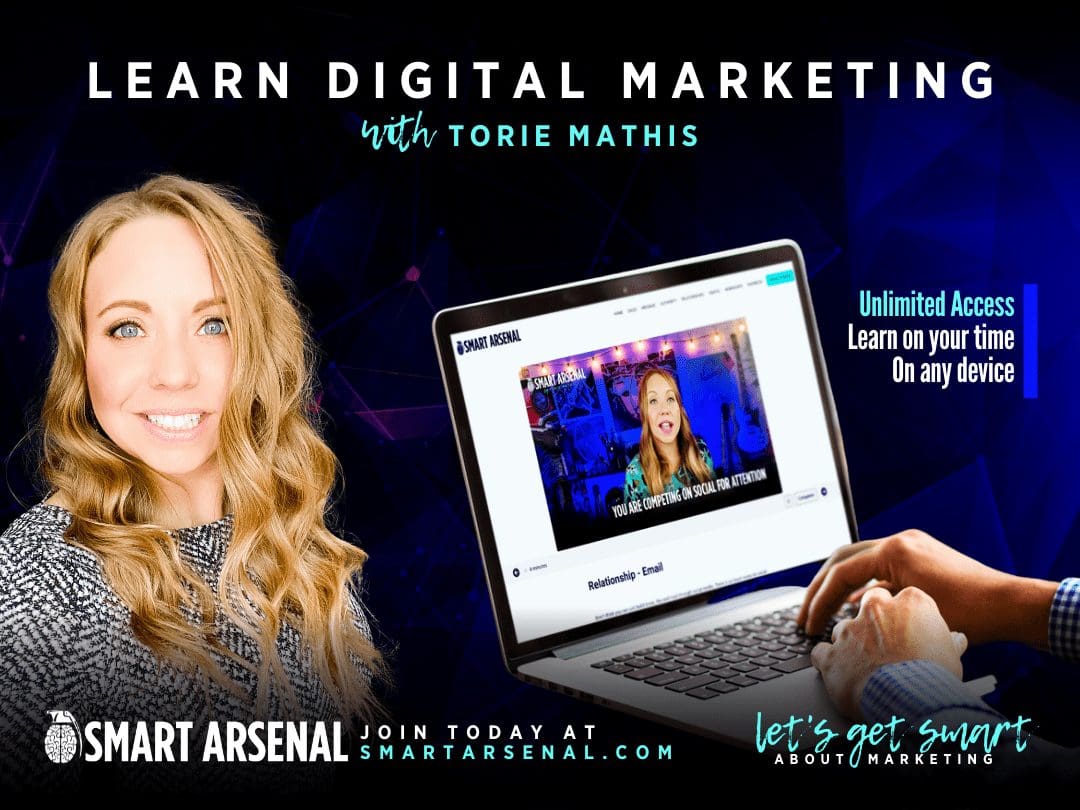
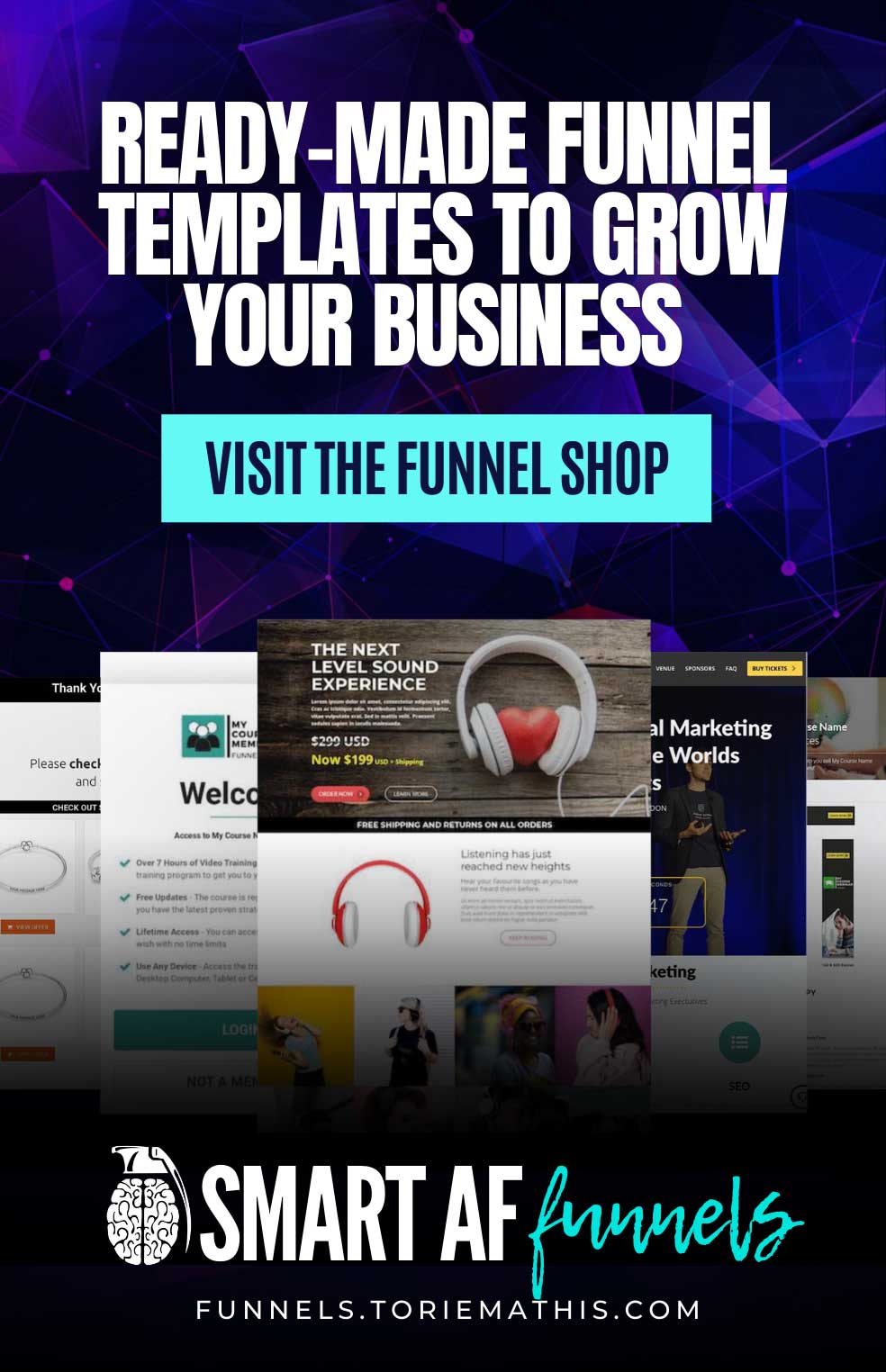
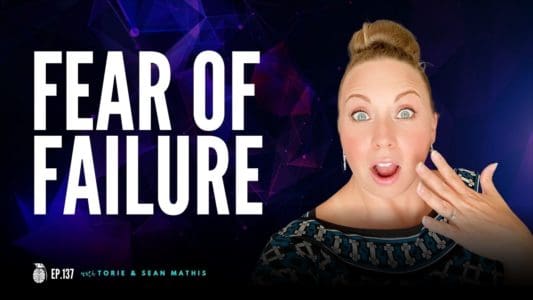
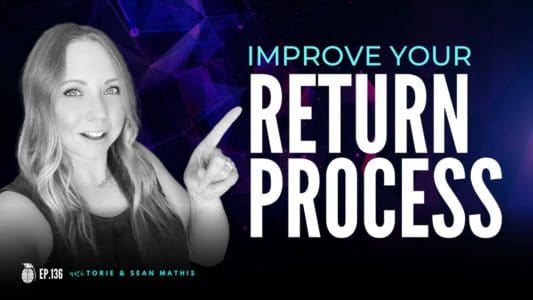

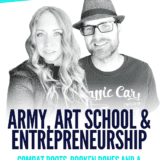
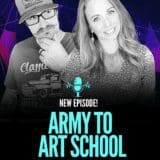
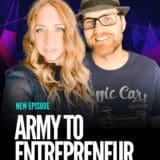
0 Comments